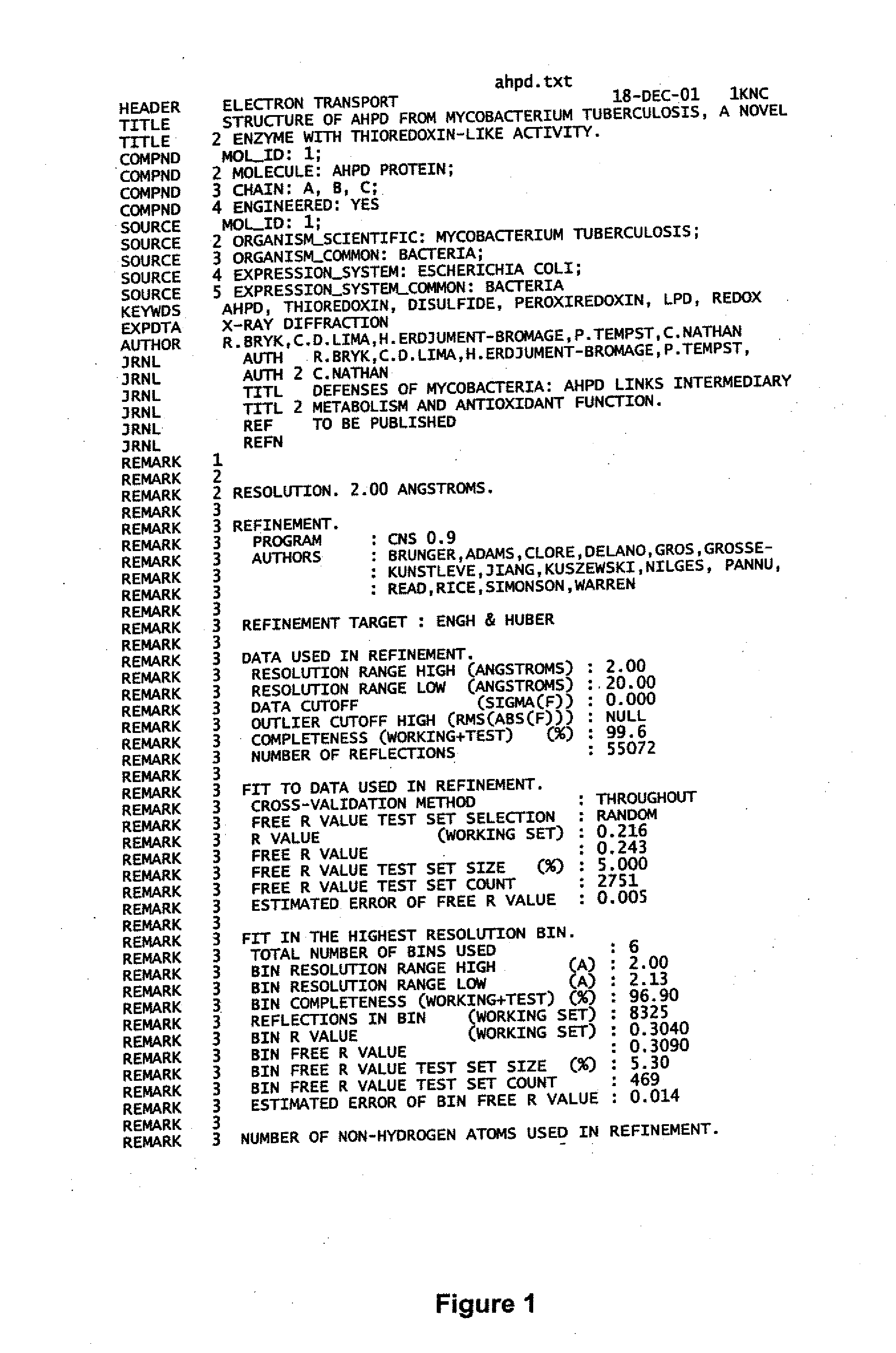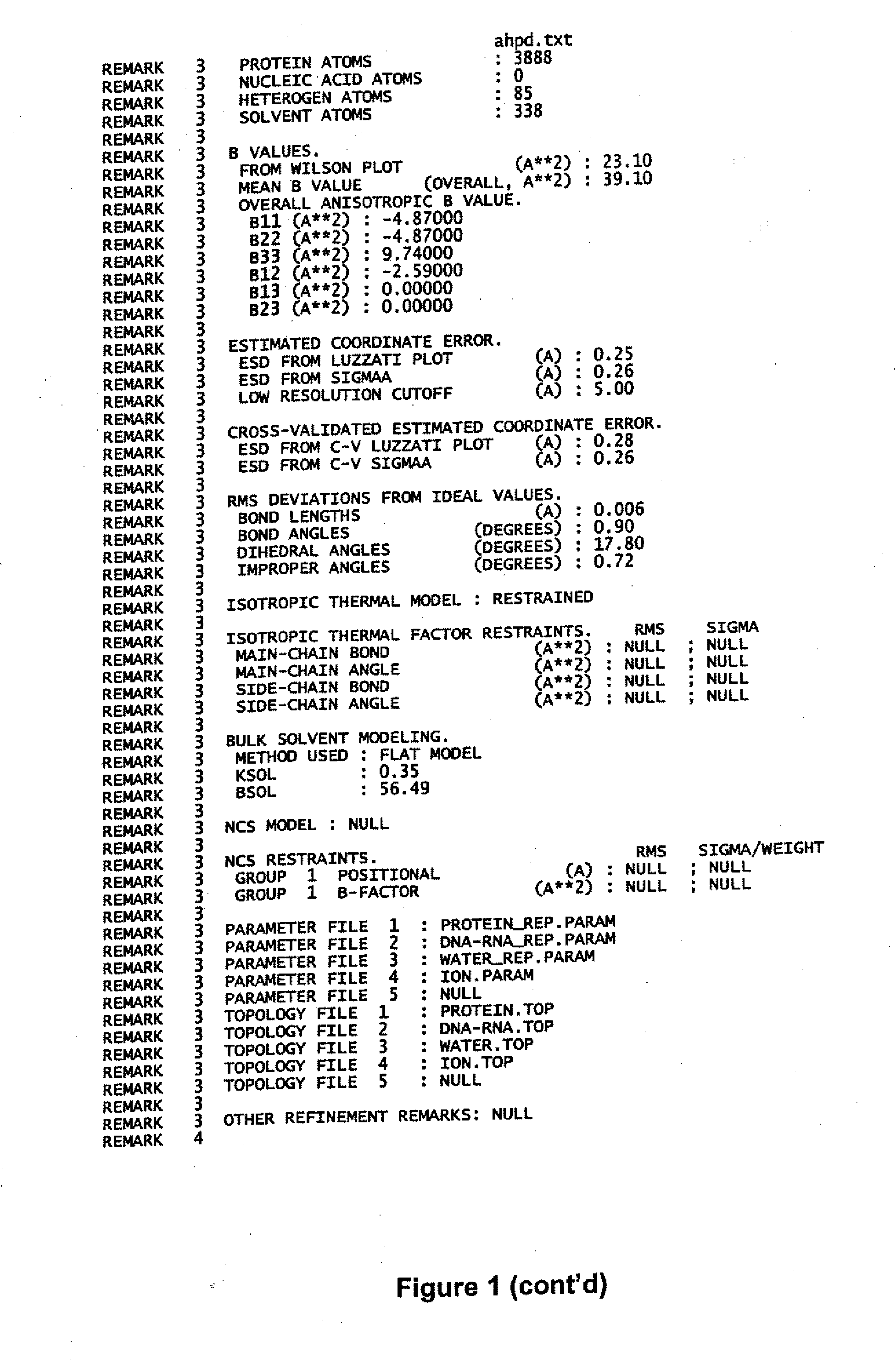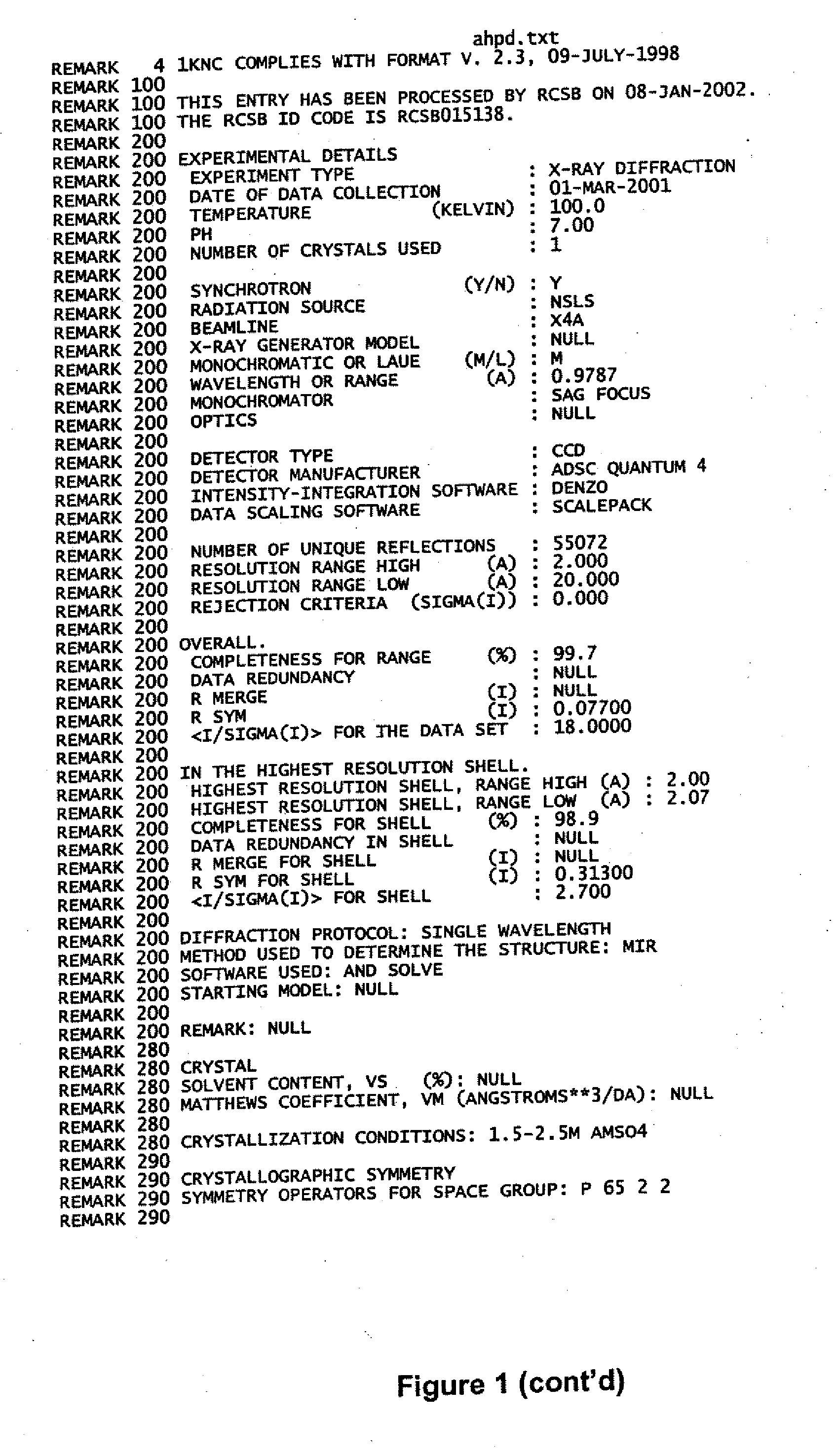Novel peroxiredoxin defense system from mycobacterium tuberculosis
- Summary
- Abstract
- Description
- Claims
- Application Information
AI Technical Summary
Benefits of technology
Problems solved by technology
Method used
Image
Examples
example 1
AhpD on AhpC Peroxidase Activity
[0075] In order to search for an AhpC reductase in M. tuberculosis, it was examined whether pure AhpC (Bryk et al., Nature, 407: 211 (2000), which is hereby incorporated by reference in its entirety) could reduce H2O2 when supplemented with lysate from M. tuberculosis H37Rv. M. tuberculosis H37Rv and M. bovis BCG lysates were prepared in 25 mM KPi, 1 mM EDTA, 1 mM PMSF by bead beater from log phase cultures. The AhpD open reading frame (ORE) was amplified by PCR with engineered 5′ NdeI and 3′ NheI sites and cloned into pET11e. Expression was induced in E. coli BL21(DE3) with 1 mM IPTG. AhpD was purified to homogeneity by phenyl Sepharose, Q Sepharose and Sephadex G200 chromatography. AhpD C130S and AhpD C133S were generated using QuikChange Site-Directed Mutagenesis Kit (Stratagene La Jolla, Calif.).
[0076] Neither NADH nor NADPH supported peroxidase activity by AhpC in the presence of lysate from M. tuberculosis H37Rv (FIG. 5). However, the further a...
example 2
zation and Structure Determination of AhpD
[0077] To gain insight into the function of AhpD and set constraints on the identity of the elements that reduce it, AhpD was crystallized and its structure was solved at 2.0 Å resolution by X-ray diffraction. 96-well crystallization trials were conducted that produced diffraction quality crystals in several conditions. AhpD crystals of superior diffraction quality were grown by hanging drop vapor diffusion against a well solution containing ammonium sulfate from 1.5M to 2.5M to a final size of 0.3×0.3×0.4 mm. The data were obtained from AhpD crystallized in space group P6522 (a=b=108.3 Å, c233.6 Å, α=β90°γ=120°). Diffraction data collection was accomplished with cryo-preserved crystals (25% glycerol). Crystals of native and thimerosal derivatives were diffracted at beam line X4A at the National Synchrotron Light Source and a laboratory copper Kα source (Rigaku RU200) equipped with Osmic multi-layer optics and a Raxis-IV imaging plate detect...
example 5
ution of AhpC Enzymatic Activity with Recombinant Proteins
[0084] To reconstitute peroxidase activity solely with mycobacterial proteins, Lpd and SucB ORFs were amplified by PCR from M. tuberculosis H37Rv genomic DNA. Lpd primers were with engineered 5′ NdeI (5′GGGTAGGGCATATGACCCACTATGACGTCG3′; SEQ ID NO: 2) and 3′ NheI (5′GCTCGCGCTAGCCGTCATGAGCCG3′; SEQ ID NO: 3) sites. SucB primers contained 5′ NdeI (5′GGAGTCAACACATATGGCCTTCTCCG3′; SEQ ID NO: 4) and 3, BamHI (5′GCGATCGGATCCACGGCGTTGG3′; SEQ ID NO: 5) sites. Fragments were cloned into pET11c digested with corresponding sets of enzymes. Protein expression was induced in E. coli BL21(DE3) with 1 mM IPTG. Lpd was purified to homogeneity from inclusion bodies by Q Sepharose chromatography. SucB expression was induced in cells supplemented with 200 μM lipoic acid to ensure lipoylation. Such was purified by Q Sepharose and avidin agarose chromatography, eluting from the latter column with 5 mM lipoic acid, which was subsequently dialyzed ...
PUM
| Property | Measurement | Unit |
|---|---|---|
| Molar density | aaaaa | aaaaa |
| Molar density | aaaaa | aaaaa |
| Fraction | aaaaa | aaaaa |
Abstract
Description
Claims
Application Information
 Login to View More
Login to View More - R&D
- Intellectual Property
- Life Sciences
- Materials
- Tech Scout
- Unparalleled Data Quality
- Higher Quality Content
- 60% Fewer Hallucinations
Browse by: Latest US Patents, China's latest patents, Technical Efficacy Thesaurus, Application Domain, Technology Topic, Popular Technical Reports.
© 2025 PatSnap. All rights reserved.Legal|Privacy policy|Modern Slavery Act Transparency Statement|Sitemap|About US| Contact US: help@patsnap.com



